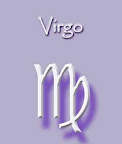
Lady Day
Now comes the Vernal Equinox, and the season of Spring reaches it's apex, halfway through its journey from Imbolc to Bealtaine. Once again, night and day stand in perfect balance, with the powers of light on the ascendancy.
We think that the customs surrounding the celebration of the spring equinox were imported from Mediterranean lands, although there can be no doubt that the first inhabitants of the British Isles observed it, as evidence from megalithic sites shows. But it was certainly more popular to the south, where people celebrated the holiday as New Year's Day, and claimed it as the first day of the first sign of the Zodiac, Aries. However you look at it, it is certainly a time of new beginnings, as a simple glance at Nature will prove.
In the Roman Catholic Church, there are two holidays which get mixed up with the Vernal Equinox. The first, occurring on the fixed calendar day of March 25th in the old liturgical calendar, is called the Feast of the Annunciation of the Blessed Virgin Mary (or B.V.M., as she was typically abbreviated in Catholic Missals). 'Annunciation' means an announcement. This is the day that the angel Gabriel announced to Mary that she was 'in the family way'. Naturally, this had to be announced since Mary, being still a virgin, would have no other means of knowing it. (Quit scoffing, O ye of little faith!) Why did the Church pick the Vernal Equinox for the commemoration of this event? Because it was necessary to have Mary conceive the child Jesus a full nine months before his birth at the Winter Solstice (i.e., Christmas, celebrated on the fixed calendar date of December 25). Mary's pregnancy would take the natural nine months to complete, even if the conception was a bit unorthodox.
The other Christian holiday which gets mixed up in this is Easter. Easter celebrates the victory of a god of light (Jesus) over darkness (death), so it makes sense to place it at this season. Ironically, the name 'Easter' was taken from the name of a Teutonic lunar Goddess, Eostre (from whence we also get the name of the female hormone, estrogen). Her chief symbols were the bunny (both for fertility and because her worshipers saw a hare in the full moon) and the egg (symbolic of the cosmic egg of creation), images which Christians have been hard pressed to explain.
Incidentally, this raises another point: recently, some Pagan traditions began referring to the Vernal Equinox as Eostara. Historically, this is incorrect. Eostara is a lunar holiday, honoring a lunar Goddess, at the Vernal Full Moon. Hence, the name 'Eostara' is best reserved to the nearest Esbat, rather than the Sabbat itself. How this happened is difficult to say. However, it is notable that some of the same groups misappropriated the term 'Lady Day' for Beltane, which left no good folk name for the Equinox. Thus, Eostara was misappropriated for it, completing a chain-reaction of displacement. Needless to say, the old and accepted folk name for the Vernal Equinox is 'Lady Day'. Christians sometimes insist that the title is in honor of Mary and her Annunciation, but Pagans will smile knowingly.
Naturally, this is the season to celebrate the victory of life over death, as any nature-lover will affirm. And the Christian religion was not misguided by celebrating Christ's victory over death at this same season. Nor is Christ the only solar hero to journey into the underworld. King Arthur, for example, does the same thing when he sets sail in his magical ship, Prydwen, to bring back precious gifts (i.e. the gifts of life) from the Land of the Dead, as we are told in the 'Mabinogi'. Welsh triads allude to Gwydion and Amaethon doing much the same thing. In fact, this theme is so universal that mythologists refer to it by a common phrase, 'the harrowing of hell'.
However, one might conjecture that the descent into hell, or the land of the dead, was originally accomplished, not by a solar male deity, but by a lunar female deity. It is Nature Herself who, in Spring, returns from the Underworld with her gift of abundant life. Solar heroes may have laid claim to this theme much later. The very fact that we are dealing with a three-day period of absence should tell us we are dealing with a lunar, not solar, theme. (Although one must make exception for those occasional male lunar deities, such as the Assyrian god, Sin.) At any rate, one of the nicest modern renditions of the harrowing of hell appears in many Books of Shadows as 'The Descent of the Goddess'. Lady Day may be especially appropriate for the celebration of this theme, whether by storytelling, reading, or dramatic re-enactment.
For modern Witches, Lady Day is one of the Lesser Sabbats or Low Holidays of the year, one of the four quarter-days. And what date will Witches choose to celebrate? They may choose the traditional folk 'fixed' date of March 25th, starting on its Eve. Or they may choose the actual equinox point, when the Sun crosses the Equator and enters the astrological sign of Aries.
I can not remember where I obtained this article many many years ago. In my youth I was never good about noting where I found things when searching online... Also, this article has been changed in someways to depict it closer to how I perceive this Sabbat. I did not originally create this peice and I do not claim it to be mine, however over the years I have altered them, if you know of the original source, I'd be more than happy to link to and cite them.





No comments:
Post a Comment
Thank you for commenting on my blog! I always enjoy the insight and views from my readers. Have a fantabulous day!!